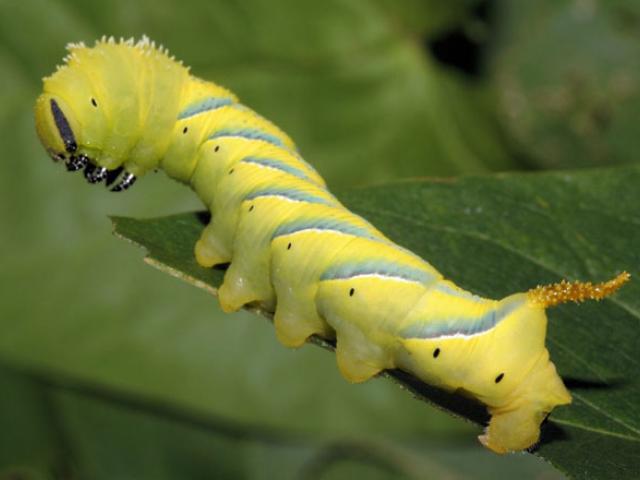
Female moths lay eggs, each hatching into a caterpillar (or larva), which is the eating and growing stage of the life-cycle. Caterpillars eat various types of plant material, mostly leaves but also flowers, fruits, stems and roots. Some feed by tunnelling within leaves or stems, even inside tree trunks.
A caterpillar grows in stages called 'instars', each time splitting and shedding the old skin to allow its body to expand. Reaching full size may take a few weeks to a few years, depending on the species. The caterpillar then becomes a pupa with a tough outer skin, inside which its body is reorganised into a moth. Many caterpillars burrow into the soil to pupate, but others fasten themselves to plant stems with silk. Some spin a silk cocoon and pupate inside it.
Time spent in the pupa stage varies with the species, from weeks to years. When the moth emerges its wings are crumpled and need to expand and dry before it can fly.
The months in which each stage of the life-cycle occurs differ with the species. The winter may be spent as an egg, caterpillar, pupa or adult, either in hibernation or in some cases active. A few species fly and reproduce in the winter.
In many species, the adult moth only lives a short time, days or weeks, but others live for months. Although they don't grow, many moths need to feed on nectar for energy. They use a long hollow proboscis to suck nectar from flowers, some hovering to do so. Some don't feed at all, and may have no mouth parts.
The adult moth is the stage of the life cycle for reproduction, so males and females need to find each other and mate. In many species the female produces a chemical scent called a pheromone which the male detects with its antennae, often feathered to be more sensitive.

